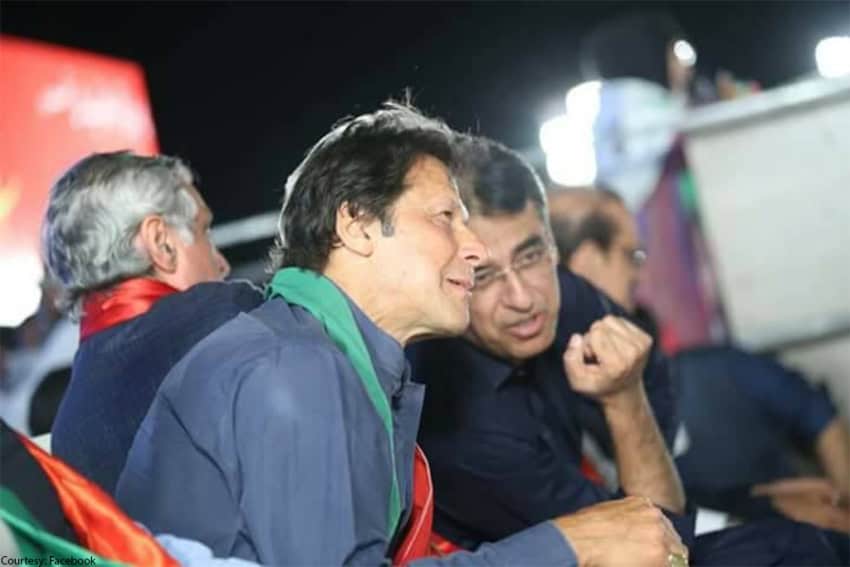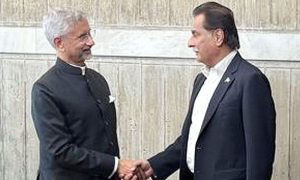While settling into governmental positions after government formulation takes its time, the signs are already becoming understandable that how the Pakistan Tehreek-e Insaf (PTI) team at the top aims to tackle Pakistan’s faltering economy.
The would-be finance minister Asad Umar, as well as PM-in-waiting, have in their post-election period shared the broader contours of the economic plans and policies in the days to come.
It is interesting to note however that Mr. Umar has made it clear that his party’s government would not be opting for an oft-trodden road of coming up with populist decisions to start with – ruling out any ‘lollipops’, relief measures so to say. It is one thing if they would stick to this resolve; it is yet another that whether they would be able to offer any.
Let us start by having a look at what the immediate challenges are, on the ground. The things needing urgent attention are attached more to the external sector. Varying estimates tell us that the country needs anything between as less as $ 8 billion to as high as $ 24 billion to plug its immediate current account gap – the difference between what we as a nation receive from and pay to the rest of the world.
And this is the point where ‘Naya Pakistan’s’ expected economic managers have so far fell short of expressing a clarity on their part. Let us be positive until they are in the office formally and not left with any excuse that they are not having the required data and details at hand.
Asad Umar made it somewhat clear by telling the media that all options including the one of going to the International Monetary Fund (IMF) are to be explored. Yet, as the political pressure including from within his own party started to develop, he has been seen as giving some explanations of what he meant and what he did not. Interestingly yet again, he has started giving indications of issuing foreign currency bonds to overseas Pakistanis – perhaps more costly and ‘political’ decision it may turn out to be.
And the tough announced and unannounced conditionality attached with an IMF programme – as was made clear with the US Secretary of State Pompeo’s threatening statement late July – would have to be tacked prudently. Statements in media for popular consumption do not change the reality that the US today remains the single largest shareholder, and thus decision maker, within the Fund.
Would China (already having committed $ 2 billion new loans) and Saudis, UAE, other creditors come forward easily to bail Pakistani economy out of woods remains to be seen? Let us be clear that there are no free lunches involved and rhetoric from sit-in and/or campaign dies, simply, just there.
The reality beckons when one takes the reins in his or her own hands. Like it or not, PTI government would be adding up around one thousand billion rupees – likely more – to country’s Gross Public Debt within first few months of it’s tenure – something that Imran Khan has been cursing the PML-N and PPPP governments of the past decade for.
The man to hold country’s kitty in PTI government is echoing the outgoing caretaker finance minister in highlighting that the budget for 2018-19 fiscal presented and approved by the previous PML-N government was ‘unrealistic.’ Yet, whether PTI would go for a budget exercise afresh or would settle for a ‘mini-budget’ is also not clear as of now.
Ironically, there are hardly any budget heads – except for already low Public Sector Development Programme (PSDP) – where the luxury of making any sizeable cuts is available. The real test, in this case, will be as to what the PTI think-tank comes up with in terms of increasing revenues, i.e., what is to be done for broadening the tax base and to avoid tax evasion, especially by the cream of rich, resourceful Pakistanis who quite visibly don’t pay what is due. Let us hope the political considerations would not make PTI go lopsided here, as has been the case in the past.
China Pakistan Economic Corridor (CPEC) has been important, and perhaps single largest, a component of Pakistani economy over past 3 to 4 years. Yes, transparency in the plan of this magnitude is a prerequisite for it to succeed and be sustainable in the long run. We at Daily Pakistan Global have been stressing for the same. Yet, it needs to be ensured that the decision of placing CPEC details in the parliament is sincerely for that very purpose of transparency and institutional decision-making, not for political point-scoring. The latter route may have serious domestic and international (especially bilateral consequences.)
Managing the sick (and sickening) Public Sector Enterprises (PSEs) through a fund under the President of Pakistan, as PTI indicates, would also need a bold political approach.
While Imran Khan has made it known that he prefers investments into human development over [Communications] infrastructure building and at the same time he talks about utilizing Chinese experience of poverty reduction, which was not possible without huge investments in the cross-country communications infrastructure. And the catch here is that China’s coastal eastern areas were the first to benefit. Trying to appease all at once works nowhere.
Inflation is nudging up and would need policy interventions. Exports – beyond already pampered industries – are crying for solid pushes. And privatization, where so required, cannot be implemented without well-thought-out homework involving proper safeguards. This would surely need more than just one, or just a few, heads working.
Whether ‘Naya Pakistan’ also means something real for Pakistani economy, and more importantly the economy of livelihoods, is yet to be seen. We at Daily Pakistan Global will keep updating and educating our readers as the things start unfolding in this important arena. Let us all hope for positive beginnings.














